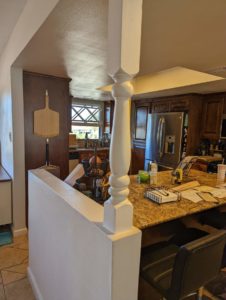How to Apply Drywall Mud
Taping and applying joint compound — “Drywall mud,” as many contractors refer to it — is that the last step that transforms sheets of drywall into smooth, seamless walls with straight, clean corners common in most homes and offices. Though time-consuming, the task is comparatively uncomplicated and with a touch of patience and a mild touch, the typical homeowner can do an inexpensive job and save on the prices of hiring a professional. A few, simple tools and materials are required to finish the task and may be found at the most local hardware stores or home centers.
1.Call the local building department to make sure the drywall is correctly fastened with the proper type and number of drywall screws for your particular installation. make sure the drywall sheets are butted tightly together, with a maximum 1/4-inch gap. Verify outside corners are reinforced with a metal right angle, also referred to as a bead.
2.Run the sting of a drywall knife over the surface of every sheet of drywall to make sure each screw is correctly countersunk. (If they are not , the knife will catch on the screw heads as you pass it over them.) The screws should dimple the drywall facing paper, pulling the screw slightly below the surface of the paper, but not tearing it. If unsure, use a countersinking drilling bit attachment designed for installing drywall.
3. Apply a strip of adhesive mesh tape over every seam and smooth the tape with the sting of a drywall knife to make sure proper adhesion. The tape helps prevent cracks within the joints between sheets.
4. Load the sting of the 6-inch drywall knife with mud and push the compound through the mesh into the inside corner joints and also the seams between sheets. When they’re full, smooth the mud out with the knife, covering the tape on either side by about 2 inches and scrape off any excess. during a similar fashion, fill and smooth screw holes and the outside corner edges along the metal bead.
5. Let the primary coat dry overnight and check the mud is uniformly white. Wet patches appear darker. Sand any bumps and imperfections with a fine drywall sandpaper and sanding blocks.
6.Load the 10-inch drywall knife with mud and apply a skinny layer over joints and screw holes, smoothing the mud to a gradual, imperceptible edge. Let the ultimate coat of mud dry overnight, then sand and wipe surfaces with a humid towel or rag to get rid of dust before priming and painting.
Farley Construction : Please contact us for professional Drywall Mud Services.



